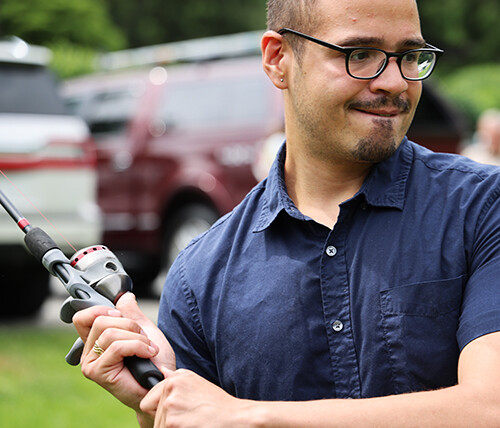
There are a lot of options to find the right fishing rod and reel. Start the easy way and visit a tackle loaner station where you can borrow equipment for free to find out which gear best suits you.
Most sporting goods stores and tackle shops have kits to help new anglers get started. You’ll find pre-spooled rod and reel combos that’ll quickly get you on the water. You’ll want a basic understanding of the different rods and reels before you go shopping, though.
Fishing rods
Fishing rods come in many sizes to catch different types of fish, and vary in length and flexibility. Stiff rods work well to catch large fish, and flexible rods work well to catch small but strong fish. A medium-length rod, 6-7 feet, is a good place to start. It’s easier to cast and is versatile.
A fishing rod has three sections: butt, mid-section and rod tip. The butt of a rod includes the handle and reel seat, and your first fishing rod will likely have a reel pre-installed.
Line guides run the length of the mid-section and rod tip to guide your fishing line to the water.
Fishing reels

There are different types of reels, but we’ll focus on spincast reels and spinning reels, the most common and easiest to learn.
Spincast reels are push-button, closed-faced reels. The spool of fishing line is inside the housing, and a button releases the line to cast. When fishing with a closed-faced reel, you hold the rod with the reel and line guides pointing toward the sky.
Spinning reels are also known as open-faced reels. With no housing, you can see the spool of line, and you flip a bail mechanism (a metal loop) to release the line when casting. Fish with an open-faced reel holding the rod with the reel and line guides pointing toward the ground.
Both closed-faced and open-faced have dials to adjust the drag on the line, which sets the tension a fish is going to feel once it’s hooked. You don’t want your drag so tight that fish can’t pull the line, but you don’t want it so loose that you can’t reel them in.
The final component of both reels is the crank, which allows you to reel in your line.
After you find the right fishing rod and reel, learn about what goes on the end of the line.



